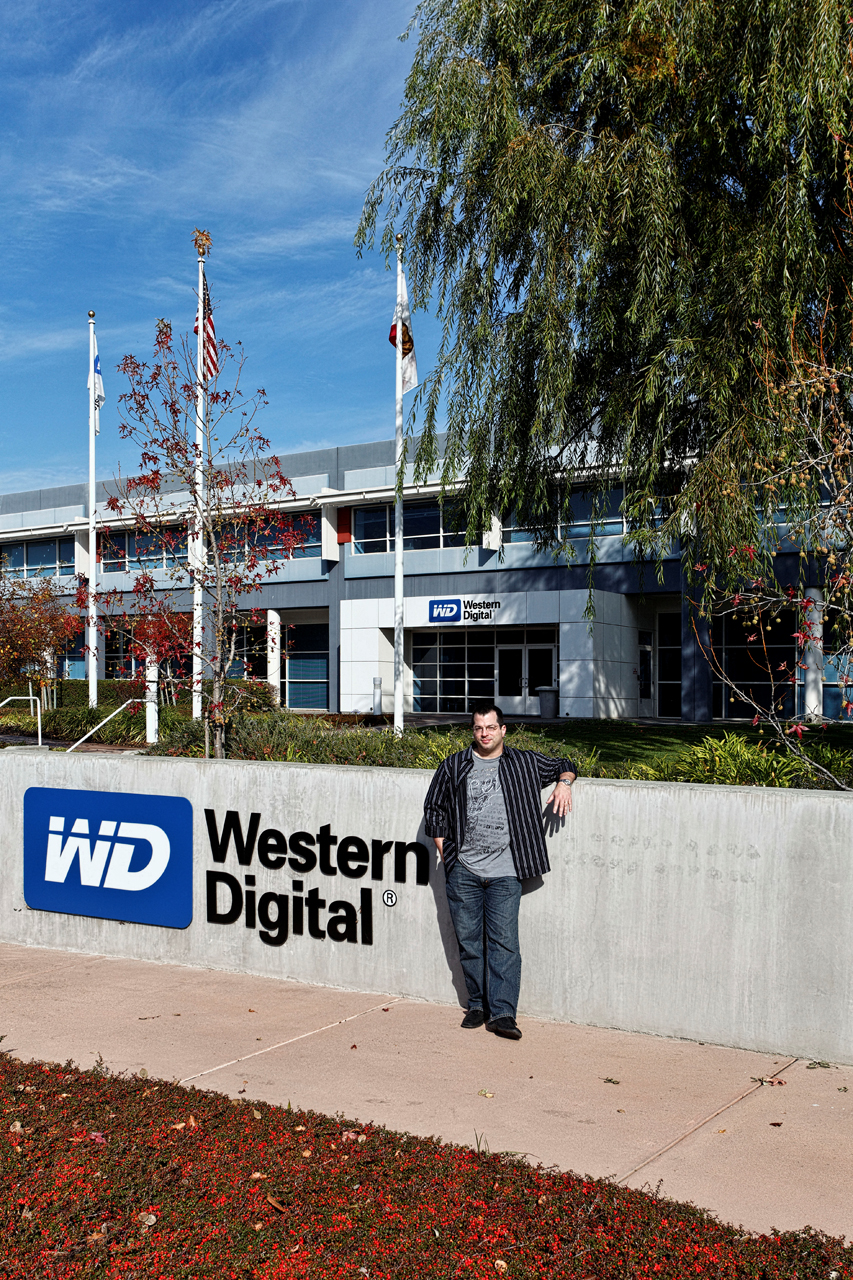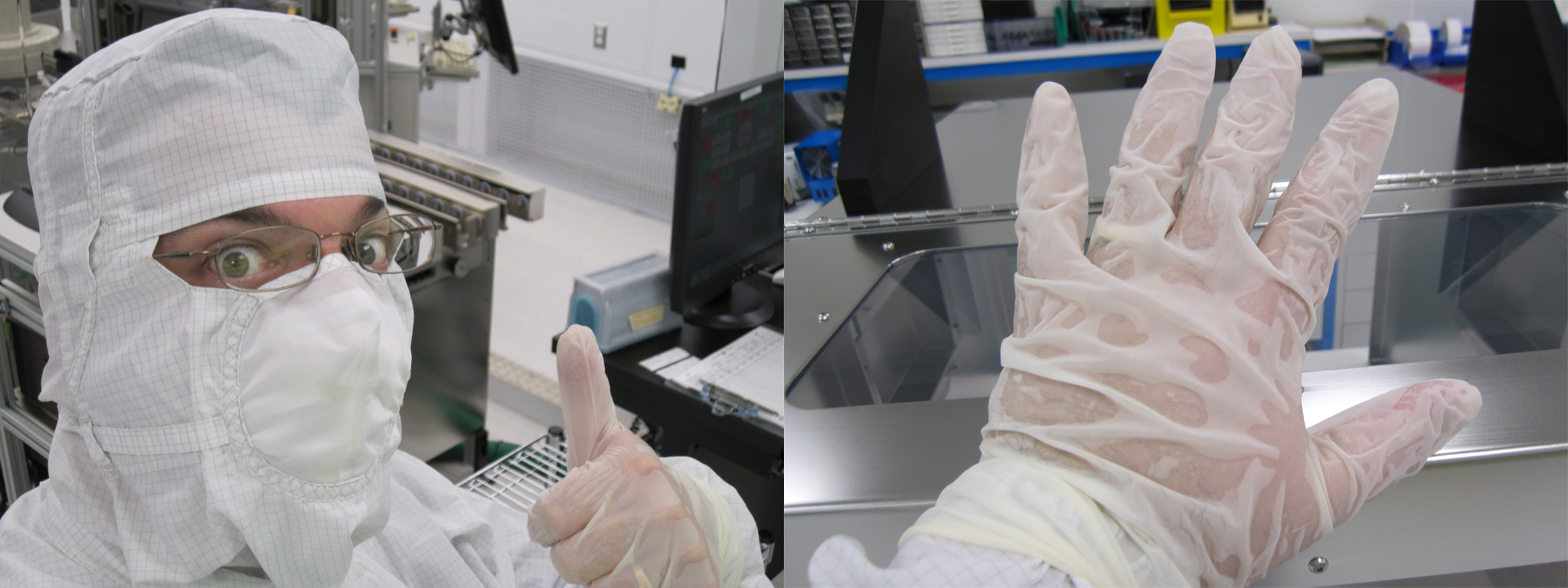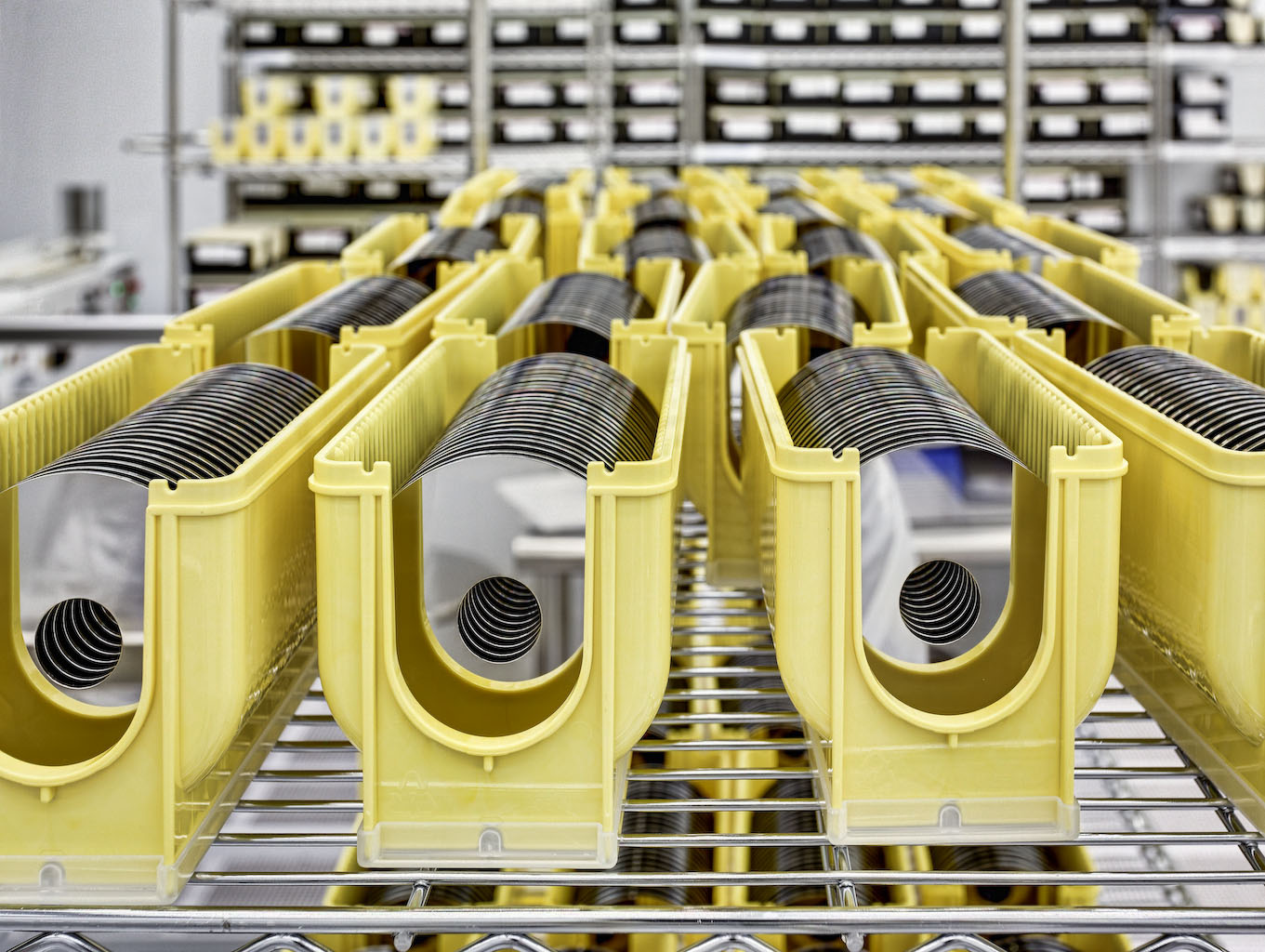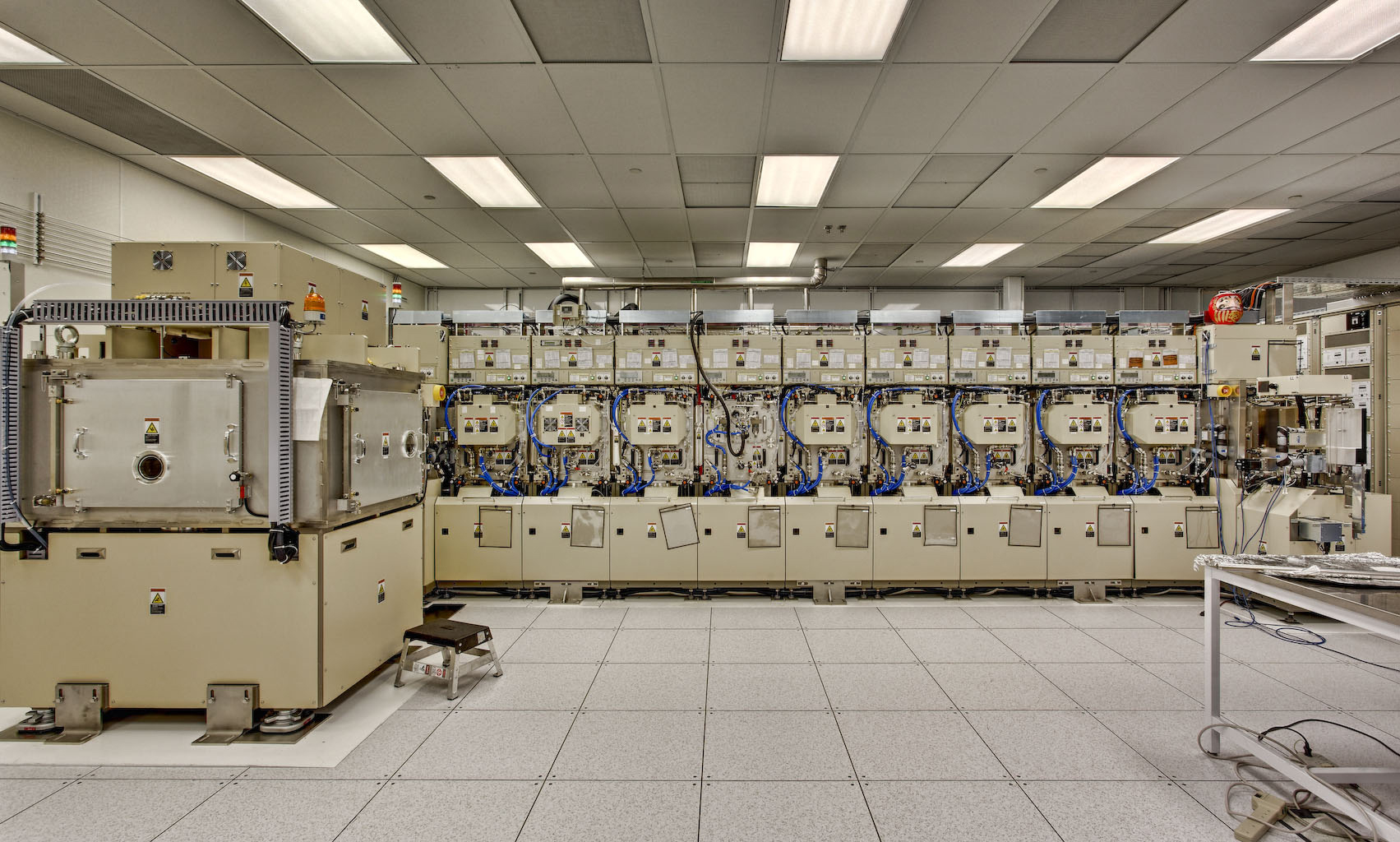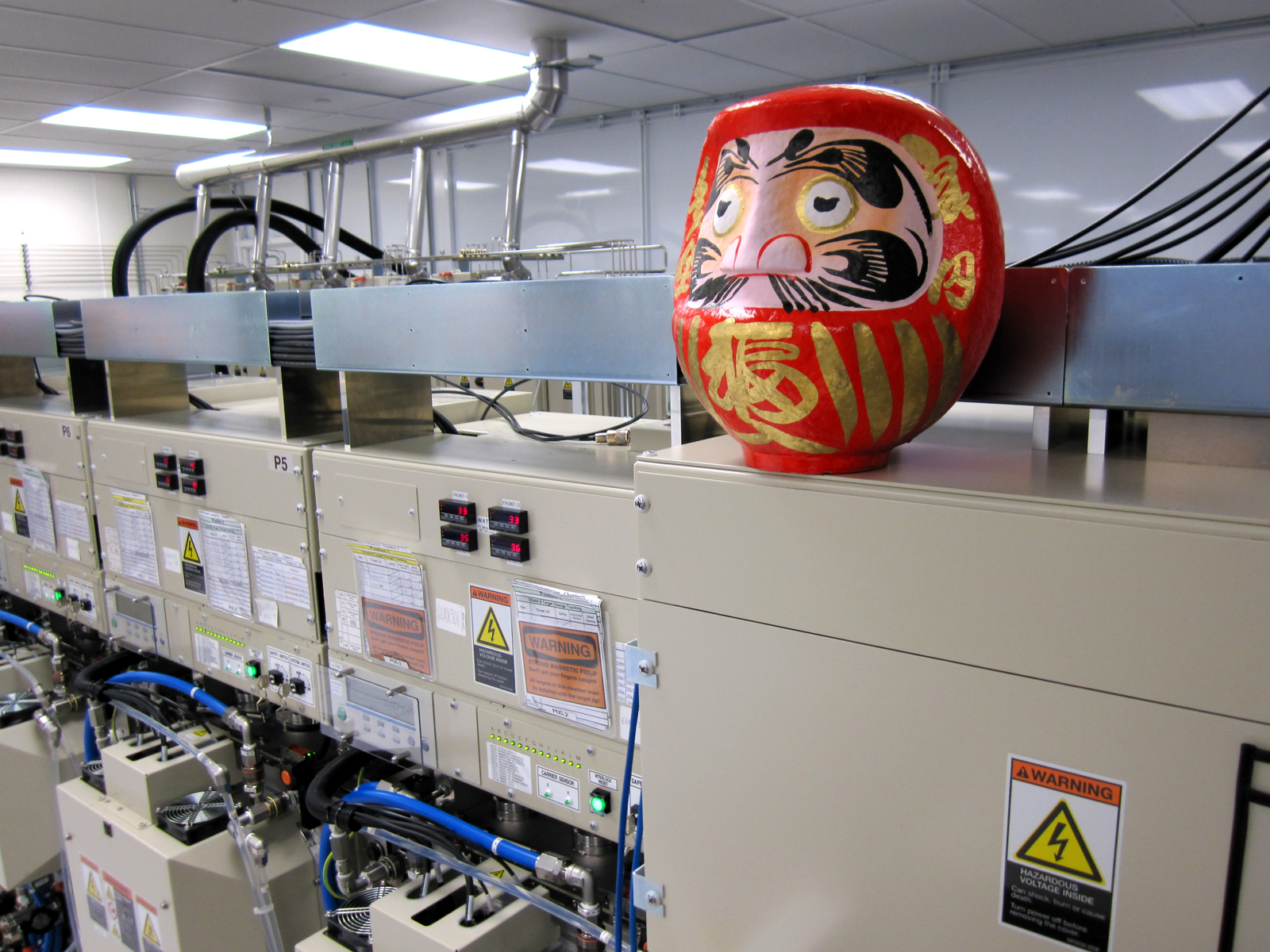Inside Western Digital: How Tomorrow's Storage Gets Made
Great Mysteries To Be Revealed...
My first hard drive, entombed in a 1988 XT clone, stored 20 megabytes and clicked and chugged almost as much as my dad’s Buick. Back then, I worried about preserving 30KB text files. Now, I have to preserve, well, everything.
Perhaps like you, I’ve lost count of how many terabytes of capacity I have at my disposal, both on hand and online. We all know that solid state storage is great for speed and for shaving off seconds from your level load times, but hard drives safeguard your life. Your papers, projects, photos, bank reports, movies, music collection—every valuable byte of data you own—is probably stored on magnetic platters. Where do these platters come from? How are they designed and tested? Maybe most importantly, given that my personal storage needs have exploded by literally 100,000 times since that first hard drive 23 years ago, how can I know that my ever-escalating capacity needs will continue to be affordably met five or ten years from now?
When you buy a car, you look under the hood. Given the critical importance of hard disk storage in all of our lives, we thought you might want a peek under that hood, too. Now that Western Digital is in the business of breaking new capacity records (the latest Caviar Green was the first drive to hit 2TB, for example), we jumped at the chance to take a first-ever, unrestricted tour of its California R&D facilities. This is the place where magnetic technology of the 1950s meets the nano- and quantum-level technologies of the current decade.
Get Set For Adventure
Press people don’t often get clean room tours. Apparently, we’re a rowdy bunch. Hard to control. Don’t play well with others. When fab tours do happen, they tend to be highly regimented. If you get to bring in a camera at all—which is rare—you’re usually told the few things you can shoot and led around according to a pre-defined script. I mention this to point out how generous and unorthodox WD was in providing this opportunity. I was hosted for two days in San Jose and Fremont, offered access to several guides, and more or less given free reign to see whatever I wanted for however long I wanted across three very restricted facilities. This never happens.
In the center of this shot is Heather Skinner, my lead press contact at WD and the one who moved mountains to make this article possible for Tom’s Hardware. On the right is Gary Wilson of Gary Wilson Photo/Graphic, an incredibly talented friend and artist who’s been helping me look good since my 9th grade history project. And the one on the left? I don’t know that guy.
Gary is a master at high dynamic range photography, which he employed in the following shots. I, on the other hand, trailed along with a dinky Canon PowerShot, point-and-shooting whatever image happened to grab my attention in passing.
Suiting Up
Across all three clean room facilities, the preliminaries look something like this. What you see here is the dressing room. Outside this room there’s a brush machine. You stick your foot into the machine and operate an on/off bar. The machine spins two big, rotating brushes that try to pull your shoe off of your foot. I could play with that thing all day.
Get Tom's Hardware's best news and in-depth reviews, straight to your inbox.
These foot suckers are needed as a first step in removing dirt from the clean environment. In the photo on the right, you can see how much dirt still gets tracked into the dressing room entrance even after using the shoe shiner. The white rectangle you see here is very sticky. It feels like you’re walking on fly paper. Many doorways throughout the clean area have these sticky pads, and the incredible thing is that, even after taking your shoes off, wearing sterilized booties, and encasing yourself in cellophane, you still see dirt on these pads in the innermost facility areas. Apparently, we humans are dirtier than we like to think. And lest you nerd-haters doubt the wisdom of pocket protectors, check out the sign I spotted. The cost to clean 14 bunny suit boots? $600. So much for bringing in my coffee.
The first time putting on a cleanroom garment like these takes about 20 minutes. There are ties, snaps, and straps everywhere, and if you don’t do it right you’ll find your outfit falling apart while you walk down a hallway. I recommend wearing contacts and having strong arches.
It’s Gettin’ Hot In Here
This is my deranged militant extremist look. You’ll notice that the mask style on this bunny suit doesn’t match the style seen elsewhere. I assumed there was a functional difference between outfits, but the real reason for the differentiation is that each WD location has its own apparel. The suit I’m wearing here only appears at the Magnetic Media Operation (MMO) facility in San Jose. The trendy dark blue suit Heather is sporting elsewhere only appears in the Fremont head manufacturing wafer fab. Moreover, each job type (maintenance, process engineer, etc.) has its own suit style. This is so that evacuations can be better managed and done more quickly.
I’m showing you my hand to illustrate how frickin’ hot it can be in these outfits. I felt like a slowly-asphyxiating pot roast wrapped in cellophane. OK, I know that doesn’t make any sense, but suffice it to say I was literally stewing in my own juices. The ambient temperature in San Jose 2 is 69° Fahrenheit (20.5° C). Fremont’s clean room is set to an incrementally more comfortable 65° F (18.3° C). Malaysia runs at 72° F (22.2° C), which, if you’re from the Pacific Northwest like me, probably feels like a sauna.
Workin’ At The Disk Wash
I wanted to take you on this tour from “beginning” to “end,” but the problem I immediately ran into is that the workflow here runs in a circle. Engineers have platter substrates, coat them, analyze and test them, tweak the process, and start over. The same happens for the read and write mechanisms that exist on the very tip of the drive arm and must interact with the advances made in the media. There is no single machine or step where you can say, “this is where it starts.” Circular operations flow like this is typical in development facilities, unlike the far more linear, efficient flow found in manufacturing.
That said, let’s start here in the chamber where rank after rank of thin glass discs is washed to ensure that absolutely no particles mar their perfectly smooth surface. Robotic arms take each batch of discs, slowly lower them into a vat, then shower the discs until they’re submerged. Then the discs are lifted and moved to the next vat. You can see a short video clip of the process here.
First Plating
Sputter deposition, also called physical vapor deposition (PVD) is a gas-based method of depositing ultra-thin films of a given material on a substrate surface. The end result is similar to electroplating, only sputtering creates layers with thicknesses so fine they’re often measured in angstroms, which are 0.1 nanometer. There were so many sputtering (or PVD) machines spread around the MMO site that I couldn’t hope to keep track of them. Some of these are employed immediately after the glass washing to nickel plate the substrate. According to WD, this increases the value of each platter by roughly 6x.
Loading Room
After plating, the media-to-be is polished and sent to this room. Behind those windows stands the heart of this entire facility, a 16-step sputtering system that controls how magnetics are deposited on the disks. On the right, is a waist-height station for feeding the substrate disks into the sputtering system. This particular area offers plenty of recreational reading on the walls, a whole range of warning signs: hazardous voltages, crush hazards, entanglement hazards, and (my personal favorite) the warning about how the strong magnet inside the system could fritz your pacemaker. There’s also a red light hanging in one corner next to a sign that reads: “ALERT. FLAMMABLE GAS DETECTED WHEN LIGHT IS FLASHING.” Luckily, we all escaped unscathed.
For the photographically curious, I offer these two shots at slightly different angles. My image (center) offers a little peek at the front of the sputter system, but Gary’s image (left) illustrates the difference in clarity and quality you get with professional gear and the HDR process.
The Secret Sauce
Here’s the back side of the sputter system. There are 16 machines lined up, each of which controls a different detail of the deposition process. The deposition “recipe” gets figured out at the MMO, then the Asia facilities, which contain an identical copy of this sputter system, put it into mass production.
“Every knob can be tweaked,” noted my supervising engineer guide. “The configurations are infinite if you think about temperature, power, number of chambers, and number of elements you can put together in a target. The struggle to get to the next generation is pretty much infinite in all directions. There is no procedure saying ‘do this, now do this’ to get to the next generation of technology. Every little advance has to be figured out here through a lot of trial and error.”
Naturally, WD doesn’t have to reinvent the wheel (or platter) with each new design. Ninety-nine percent of the basic design and cutting-edge work is already done. It’s just that little, novel one percent that makes the difference between today’s generation and what comes next. If there’s single “secret sauce” to WD’s research efforts, the place where that magical one percent comes into being, it happens here. This is the system that refines what mass storage technologies we’ll be buying six months to two years from now.
Good Luck With That
Sitting atop the 16 sputter machines is this good luck talisman. Such idols are common in southeast Asia. In Japan, they take the form of Maneki Neko, a cat with a raised paw gesturing for good fortune to come to him. Sometimes when you receive the idol, only one eye is painted with an iris. You paint the other eye when the good fortune arrives. Nobody on my tour knew if this particular talisman had a name, but he was installed along with the sputter machines and has sat there ever since. Apparently, he’s doing a brilliant job.
Don’t Press The Red Button!
Hey, what could go wrong? Not that I have a trained eye, but everything at WD sure seemed to run like clockwork. Nevertheless, you’ll see these EMO buttons sprinkled everywhere throughout the facilities. At first, I thought that maybe pressing the button would put some Jawbreaker or Jimmy Eat World over the PA system—some emo tunes to provide relief from the constant background noise of airflow control (you’ll notice that many of the floors are ventilated) and rumbling machinery. But no, EMO stands for “EMergency Off.” Sure, the curious kid in me was dying to see what would happen when you press the big red button, but given that WD estimates the stoppage of a single machine for even a few moments can cost the company thousands of dollars, I was willing to exercise restraint.
Sputter Machines Up Close
Here’s a better look (left) at the sputter system loading tube and the narrow walkway between the machines and the loading clean room. On the right is a cool (if incomprehensible to the layman) look at the back of one of the sputtering machines. Above this sits a panel containing two LED readouts. We would have offered you a closer view, but apparently the values within the readout are proprietary, as are the settings on the dials. Everything about how these systems are set, including their position on the floor, which determines the order of progression through the sputtering process, is considered a competitive secret. Still, the WD suits weren’t overly worried about our cameras since the configuration of this system changes on a semi-constant basis. Whatever we saw during the photo shoot is now long gone. In fact, it probably changed within two weeks.
-
zelog I'm guessing the metal plate on the floor in picture 29 is slightly elevated to let the water drain.Reply -
johnbilicki There are a lot of DOA complaints on Newegg and even with 40% of that place is required to make sure the drive works before it leaves the building it still has to go through shipping...UPS shows up eight hours after FedEx and the drive it dead because during shipping your package was the substitute baby for 'kick the baby'.Reply -
milosz It's amazing that all this precision work and exotic manufacturing technology can be had for $150Reply -
anamaniac Awesome. =DReply
I've switched to Samsung drives though. ^_^
And at the pic on page 26, she's checking her farmville. (At my job we hired an insanely expensive technician to fix some really expensive equipment, which he did with his laptop... and he has checking his farmville... at a few hundred dollars per hour on the company dime of course.)
Interesting that there appeared to be no drainage for the emergency shower. They just jerry rig that thing up at the last moment and hope no one has to use it?
Also, that walkthrough video is quite depressing. Yellow rooms as far as the eye can see, without a smile in sight.
Thank you very much for this wonderful article. As much as I'd like to, I doubt I could ever work there, because my handa aren't stable enough just to take a damned picture, nevermind handle extremely precise equipment. =)
But I wonder, how many drive failures have they had because an employee dropped a contact into the drive?
Also, great to see that little sneak preview on WD NAND based storage.
Now, how about Intel and 32nm? -
kikireeki And a new HDD is born and it is DOA! "sarcasm"Reply
I just hope that WDD has done it right this time! -
jhanschu I'm under the assumption that most of the pictures were taken in a "clean room" environment. As such, the floor grating would be elevated (as previously mentioned) for the laminar air flow and there may possibly be a drain below. Also if I noticed correctly, the ceiling "tiles" were actually HEPA filters.Reply -
g00ey I'm not buying that every step visualized on these photos are being applied to each and every platter that is manufactured on this facility. For example I don't think they examine the layers of every platter in the TEM. I believe the photos don't only show the manufacturing line but also some of the research facilities for next generation products.Reply
I think the manufacturing process is very much like an assembly line process where the production flow is rather fluent which is not the impression I get at a first glance when looking through these photos. They obviously achieve som degree of economies of scale. It would be interesting too see some figures such as how long it takes to produce a platter, head, and so on and how many units/components per hour that is being produced etc.
Then look at for example picture 28 (or 25-32); I don't understand how these large electoplated platters turn into read/write heads of a harddrive. I don't see the part where these wafers are punched into small needles (sliders/heads) and how this is done. -
neiroatopelcc I find it marvelous to see all this expensive hightech and amongst those things find old crt monitors and I think in one picture about #20 I even spotted an old hp dx2000 in the right side of an image (in front of an older 13" or so crt. Really nice to see expensive mashinery associated with expensive downtime being operated using windows antique and old hardware. Seems you don't always NEED a quadcore to be effective.Reply
Great article btw. Not sure I share the authors humor, but I suppose it beats kevins.
